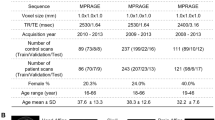Abstract
Recently, the literature showed that psychiatric disorders, such as Schizophrenia and Bipolar disorder, cause abnormalities in some brain regions. Therefore, several automatic mechanisms based on classical Machine Learning techniques have been used to recognize these diseases by means of the study of neuroimaging. A serious drawback of these approaches is that they consider only the intensity value of the points from neuroimages, without taking into account the spatiality information. Convolutional Neural Networks have subsequently applied to overcome the aforementioned issue, showing their empirical effectiveness on these tasks. However, generally Convolutional Neural Networks operate on 2D slices of the brain instead of the whole 3D structure.
This work aims to analyze the behavior of classical machine learning techniques against 2D and novel 3D Convolutional Neural Network models. An exhaustive empirical assessment has been performed to evaluate these methods on 4 real-world neuroimaging tasks, including Schizophrenia and Bipolar Disorder classification.
Access this chapter
Tax calculation will be finalised at checkout
Purchases are for personal use only
Similar content being viewed by others
References
Statistical Parametric Mapping. http://www.fil.ion.ucl.ac.uk/spm/
Abraham, A., Pedregosa, F., Eickenberg, M., Gervais, P., Mueller, A., Kossaifi, J., Gramfort, A., Thirion, B., Varoquaux, G.: Machine learning for neuroimaging with scikit-learn. Front. Neuroinform. 8, 14 (2014)
Ashburner, J., Friston, K.J.: Voxel-based morphometry–the methods. Neuroimage 11(6), 805–821 (2000)
Bledsoe, J.C., Xiao, D., Chaovalitwongse, A., Mehta, S., Grabowski, T.J., Semrud-Clikeman, M., Pliszka, S., Breiger, D.: Diagnostic classification of ADHD versus control: support vector machine classification using brief neuropsychological assessment. J. Atten. Disord. 1087054716649666 (2016)
Fan, Y., Resnick, S.M., Wu, X., Davatzikos, C.: Structural and functional biomarkers of prodromal Alzheimer’s disease: a high-dimensional pattern classification study. Neuroimage 41(2), 277–285 (2008)
Gao, X.W., Hui, R.: A deep learning based approach to classification of CT brain images. In: SAI Computing Conference (SAI), pp. 28–31. IEEE (2016)
LeCun, Y., et al.: LeNet-5, Convolutional Neural Networks, p. 20 (2015). http://yann.lecun.com/exdb/lenet
Matsugu, M., Mori, K., Mitari, Y., Kaneda, Y.: Subject independent facial expression recognition with robust face detection using a convolutional neural network. Neural Netw. 16(5–6), 555–559 (2003)
Milletari, F., Navab, N., Ahmadi, S.A.: V-Net: fully convolutional neural networks for volumetric medical image segmentation. In: 2016 Fourth International Conference on 3D Vision (3DV), pp. 565–571. IEEE (2016)
Orru, G., Pettersson-Yeo, W., Marquand, A.F., Sartori, G., Mechelli, A.: Using support vector machine to identify imaging biomarkers of neurological and psychiatric disease: a critical review. Neurosci. Biobehav. Rev. 36(4), 1140–1152 (2012)
Payan, A., Montana, G.: Predicting Alzheimer’s disease: a neuroimaging study with 3d convolutional neural networks. arXiv preprint arXiv:1502.02506 (2015)
Ronneberger, O., Fischer, P., Brox, T.: U-Net: convolutional networks for biomedical image segmentation. In: International Conference on Medical Image Computing and Computer-Assisted Intervention, pp. 234–241. Springer (2015)
Sarraf, S., Tofighi, G.: Classification of Alzheimer’s disease using fMRI data and deep learning convolutional neural networks. arXiv preprint arXiv:1603.08631 (2016)
Scarpazza, C., De Simone, M.S.: Voxel-based morphometry: current perspectives. Neurosci. Neuroecon. 5, 19–35 (2016)
Schnack, H.G., Nieuwenhuis, M., van Haren, N.E., Abramovic, L., Scheewe, T.W., Brouwer, R.M., Pol, H.E.H., Kahn, R.S.: Can structural mri aid in clinical classification? A machine learning study in two independent samples of patients with schizophrenia, bipolar disorder and healthy subjects. Neuroimage 84, 299–306 (2014)
Shioya, A., Saito, Y., Arima, K., Kakuta, Y., Yuzuriha, T., Tanaka, N., Murayama, S., Tamaoka, A.: Neurodegenerative changes in patients with clinical history of bipolar disorders. Neuropathology 35(3), 245–253 (2015)
Vieira, S., Pinaya, W.H., Mechelli, A.: Using deep learning to investigate the neuroimaging correlates of psychiatric and neurological disorders: methods and applications. Neurosci. Biobehav. Rev. 74, 58–75 (2017)
Zipursky, R.B., Reilly, T.J., Murray, R.M.: The myth of schizophrenia as a progressive brain disease. Schizophr. Bull. 39(6), 1363–1372 (2012)
Author information
Authors and Affiliations
Corresponding author
Editor information
Editors and Affiliations
Rights and permissions
Copyright information
© 2020 Springer Nature Switzerland AG
About this paper
Cite this paper
Campese, S., Lauriola, I., Scarpazza, C., Sartori, G., Aiolli, F. (2020). Psychiatric Disorders Classification with 3D Convolutional Neural Networks. In: Oneto, L., Navarin, N., Sperduti, A., Anguita, D. (eds) Recent Advances in Big Data and Deep Learning. INNSBDDL 2019. Proceedings of the International Neural Networks Society, vol 1. Springer, Cham. https://doi.org/10.1007/978-3-030-16841-4_6
Download citation
DOI: https://doi.org/10.1007/978-3-030-16841-4_6
Published:
Publisher Name: Springer, Cham
Print ISBN: 978-3-030-16840-7
Online ISBN: 978-3-030-16841-4
eBook Packages: Intelligent Technologies and RoboticsIntelligent Technologies and Robotics (R0)




